


www.tpgonlinedaily.com
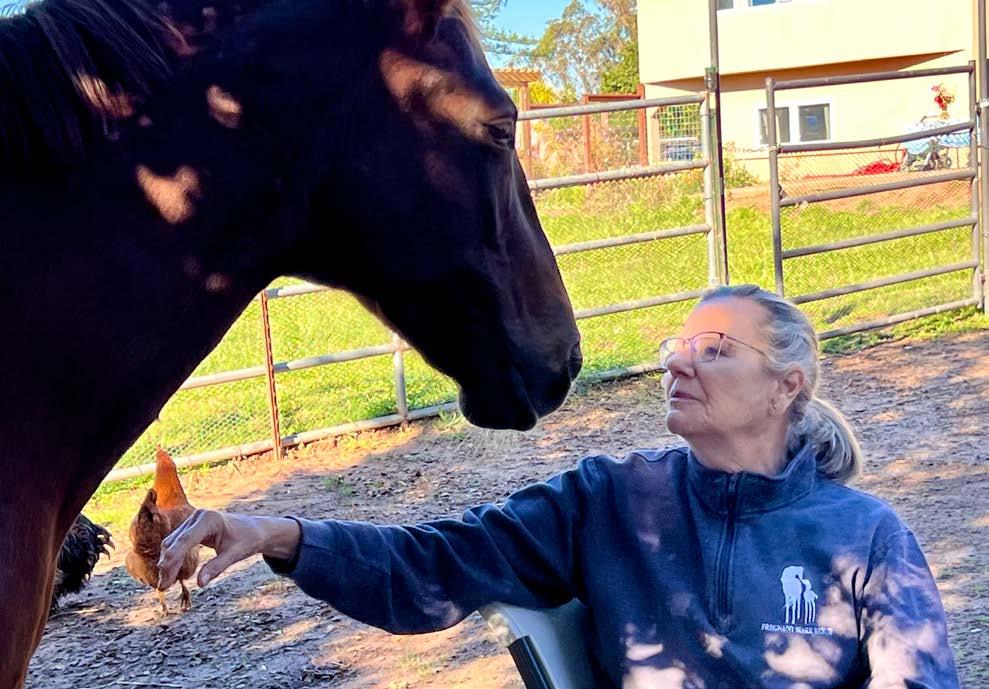




www.tpgonlinedaily.com

By Jon Chown
The two horses seemingly took little notice as a small group of people sat in a circle across the pasture at Beyond Liberty horse sanctuary. They continued to munch on long green blades of grass while the eight people chatted, keeping an eye out, but seeing not to care much.
Angel Batt, owner of Beyond Liberty horse sanctuary, invites people into her ranch for a variety of activities to learn about the creatures and experience them. This morning, she was having a discussion about the ranch with volunteers and others interested in learning more. ... continues on page 4





John Hibble of the Aptos Chamber of Commerce has been practicing his bagpipes, getting ready for the annual Holiday Market & Tree Lighting on Saturday, Dec. 6. Hibble plays the pipes every year, a Christmas tradition.
“It’s an honor playing for the community,” he said. “I first started playing in high school, and then when I joined the Navy, my brother gave me a really good set of pipes.”
page 8

Woman Found Safe
Few details have been released, but missing Utah woman Danielle Staley is safe. It was the 35-year-old woman’s first-time visiting Santa Cruz County. She disappeared after a late-night bonfire near Rio Del Mar Beach on Nov. 6. Full Story page 6











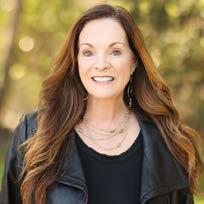







Patrice Edwards
Jon Chown
publisher
editor
contributing writers
“Horse Sanctuary” from page 1
She explained that the horses might or might not come over to visit, as was their right.
Michael Oppenheimer
Michael Oppenheimer, Ward Austin
layout
graphic artists
Michael Oppenheimer photography
Michael Oppenheimer, Camisa Composti website
production coordinator
Camisa Composti
media consultants
Teri Huckobey, Brooke Valentine
office coordinator Cathe Race
Jon Chown, Risa D’Angeles, Joe Ortiz, Jim Rummonds, Rachél Lather, Erica Padilla Chavez, Tony Tomeo, Marc Cuniberti distribution
Bill Pooley, Erik Long

Times Publishing Group, Inc.
9601 Soquel Drive, Aptos, CA 95003
The Times Publishing Group, Inc., publishers of the Aptos Times, a bi-monthly publication, the Capitola Soquel Times and Scotts Valley Times, each printed monthly, Coastal Weddings Magazine, Coastal Home and Garden Magazine, Aptos’ Fourth of July Parade Official Program Guide and Capitola’s Summer Festivals Official Program Guide, is owned by Patrice Edwards. Entire contents ©2025. All rights reserved. Reproduction in any form is prohibited without the publisher’s written permission
PHONE: (831) 688-7549
FAX: (831) 688-7551
GENERAL E-MAIL: info@cyber-times.com
Patrice Edwards: patrice@cyber-times.com
Publisher’s Assistant: assistant@cyber-times.com
Editor: info@cyber-times.com
Calendar Listings: www.tpgonlinedaily.com
Graphics Department: graphics@cyber-times.com
Billing Inquiries: cathe@cyber-times.com
Classified Sales: sales@cyber-times.com
Production: production@cyber-times.com
CHECK OUT OUR WEB SITE AT: www.tpgonlinedaily.com mission statement
We at the Times Publishing Group, Inc. are dedicated to providing a voice for the individuals and organizations in our community while highlighting the outstanding accomplishments of our local businesses. We seek to promote healthy family values through our coverage of youth activities, school news, senior events, community groups and entertainment
“Horses are naturally wary of humans because we are predators,” she explained. “We allow horses the choice to put up with us. They can choose to walk away. It makes a huge difference in the kinds of connections you’ll make.”
After the introduction, she began leading the group in breathing exercises and meditation.“These are spiritual animals,” Batt said. “They are attuned to us and to our emotions. …Sometimes they have lessons for us to learn.”
As the group fell quiet and their minds focused on breathing through the heart, the two horses slowly sauntered over to see what was going on. Ruby, the mother of the larger horse, initially stood a few feet away as Melody rubbed her big horse nose against the shoulder of a visitor deep in meditation, startling him into the present.
The group was awestruck.
“I thought at first that she (Batt) must have some grain in her pocket or something” said new volunteer Brenda Rocha regarding the horses’ apparent reaction to the mediation. “But it’s real.”
After they arrived, the two horses stayed for the rest of the session, seemingly listening in while being part of the circle. Batt told her personal story about how she came to love horses. When she was a young mom her daughter suffered from an autoimmune disease and was fighting clinical depression at age 8. Her daughter liked horses and, unable to get her near any without paying for lessons, she ponied up the money.
As her daughter got older, she and her mother became concerned about some of the things they would witness at equine events. Her daughter because interested

in Carolyn Resnick and she earned an internship with the famous horse trainer, known for inventing Liberty Training. Batt said she absorbed a lot of knowledge through the experience.
“I learned that as soon as you put a halter on a horse, you take away it’s voice,” Batt said. “Horses have a code of conduct. If you don’t follow it, you won’t have their respect.”
Her love and respect for the animals led her to open a sanctuary to save horses from the slaughterhouse, neglect

and abandonment. The nonprofit hosts a variety of workshops, wellness events and other activities aimed at connecting “nature, horses, and humans through consent, presence, and partnership.”
Batt founded Beyond Liberty in 2023. Naturally, her interest led to her meeting Lynne Hummer, who founded Pregnant Mare Horse Rescue in Watsonville more than 20 years ago. Over time, Hummer’s nonprofit has saved more than 860 horses from abuse or slaughter. Now, the two have announced a partnership.

“Together, we are combining our strengths: PMR’s long-standing work in rescue, sanctuary and advocacy, Beyond Liberty’s focus on true liberty for the horse, retirement, education, accessibility, nature and human-horse connection,” Hummer said.
Hummer said horses are special animals, connected to the Earth and humans in special ways. They also have healing capabilities and can help regulate your heart rate, blood pressure and entire central nervous system.
“They have an electromagnetic field 10 times larger than a human,” she said. “They will sync their heartbeat to yours within 10 minutes. They’re just amazing.”
Volunteer Cocoa Brown said being around the horses has been a big help to her. She said she came to the organization because she was dealing with grief and it helped dramatically with her mental well being.
“It’s a huge difference,” she said.
Batt said horses are wiser than people realize.
“They choose where to put their feet very mindfully. If they come to you, it’s not to be touched. They’re bringing something that they feel you need,” she said. n
To learn more about Beyond Liberty, its mission and the activities offered there, visit beyondliberty.org.
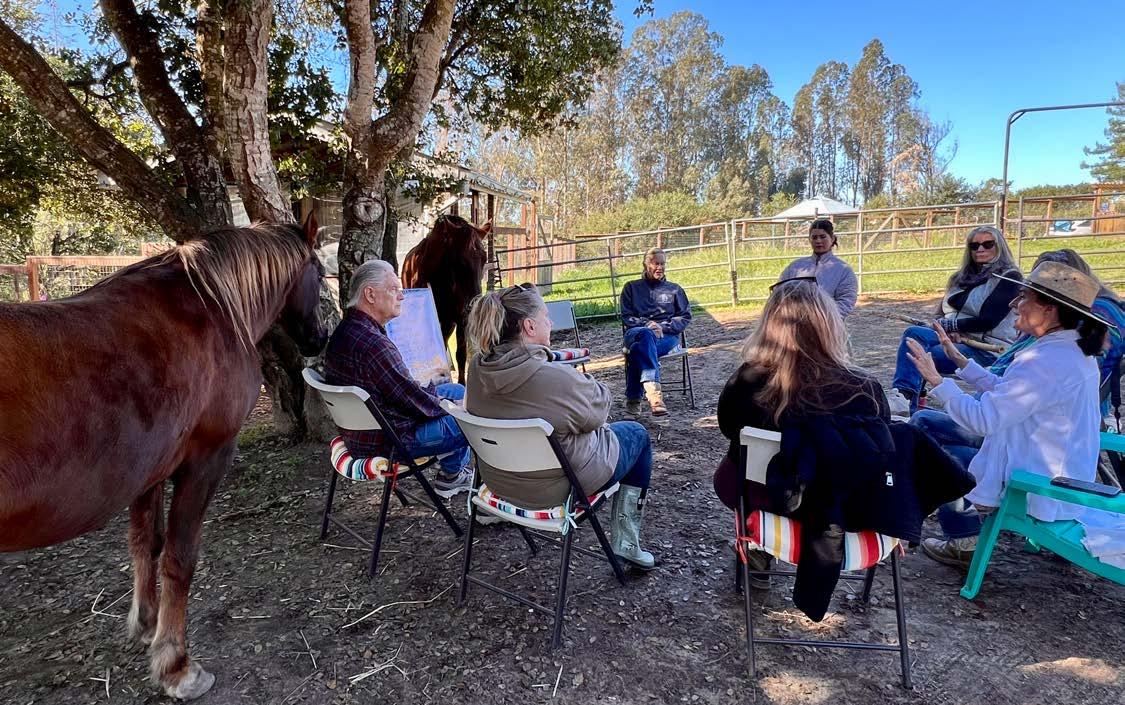










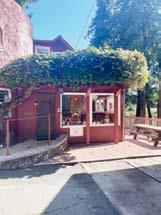
By Jon Chown
Few details have been released, but missing Utah woman Danielle Staley is safe.
It was the 35-year-old woman’s first-time visiting Santa Cruz County. She disappeared after a late-night bonfire near Rio Del Mar Beach on Nov. 6. Her boyfriend Alex Nunez said he had left to sleep in their van while she stayed on the beach with friends. In the morning, he woke up alone and went back down to the beach, only to find her cellphone and purse.

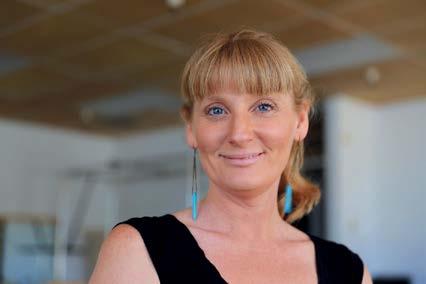
Authorities suspected foul play. “It becomes kind of suspicious when you’re looking at why are they here, why are they missing, is there a history of similar types of behaviors?” Sgt. Zach West of the Santa Cruz County Sheriff’s Office said early in the case.
West said the couple had been in Santa Cruz County for about a week before Staley disappeared. Her disappearance made national headlines and sparked a massive search locally. Her family members came to Santa Cruz County looking for her.
Nunez suggested Staley relapsed into drug use and ran off with others at the bonfire. The family directed suspicion at Nunez. Staley’s mother, April Miller, told Salt Lake City’s KSL-TV, an NBC affiliate, that Nunez and her daughter had been together on again, off again, for about 13 years and it was an abusive relationship.

“We’ve been concerned for years about that,” she said.
She said the family had been in contact with her the entire time she was in Santa Cruz, until Nov. 6. She had been traveling through California since September with Nunez.
“Danielle Staley” page 9
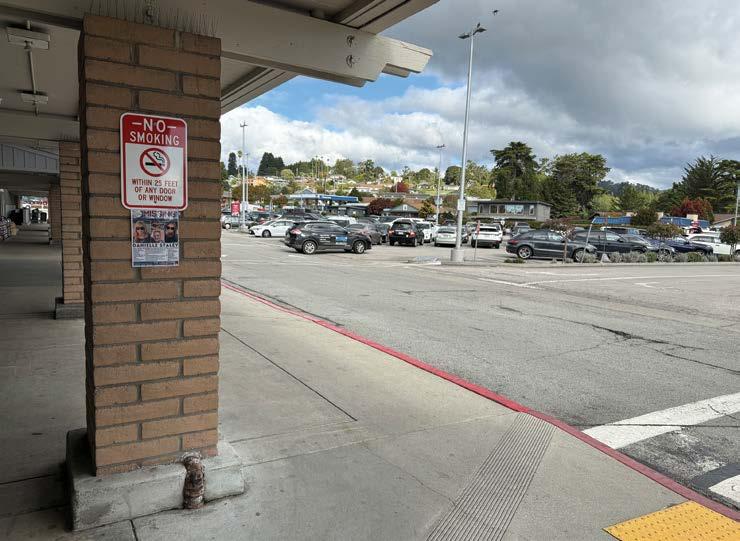
By Jon Chown
The Pajaro Valley Unified School District unveiled a plan at its Nov. 12 meeting of the Board of Trustees to cut more than 150 positions in order to balance its budget, many of them in counseling and special education. It was not well received as teachers, parents and other members of the public packed the board room to protest.
“Cut from the top! Cut from the top!” the crowd chanted at one point. Fifty-two people lined up to speak during public comment. In tears, Watsonville resident Maria Campos took her turn and spoke to the board about how PVUSD school counselors have made a massive impact on her entire family.
“Please reconsider the decision to cut counselors. Two of my brothers have attempted suicide and thanks to them, they’re alive today,” she said in Spanish. “I started seeing the signs in my daughter and I was able to refer her. … When you make these decisions, it will be the difference between life and death, and the future of many students.”
The cuts are being proposed in order to address the district’s steadily increasing budget deficit that is primarily due to the district’s consistently decreasing enrollment. The deficit for 2025–2026 is projected at $10.4 million, before rising to $15.5 million in 2026–2027 and nearly $18 million the year after that.
The decline in students coincides with a local decline in children, though the exact numbers are uncertain. According

to estimates by Neilsberg Research, Watsonville’s population peaked in 2017 at 52,842 residents and it now has about 2,000 fewer residents. And according to a recent Census Bureau analysis, the Santa Cruz–Watsonville metro area saw an 11.1% decline in children (ages 0–14) between April 1, 2020 and July 1, 2023. For many years the district served more than 18,000 students, but since 2018, enrollment has been on a steady decline, with about 400–500 fewer students each year. In 2024–25 there were 15,070 students and there are just 14,620 students expected next school year. With so many fewer students, the district stands to lose $13.4 million in funding between this year and next.
“If we continue to spend at this rate the County Office of Education will have a larger oversight. We will have to do additional reporting and that will lead to receivership and we will lose control of our district,” said PVUSD Chief Business Officer Herardo Castillo. “And that’s something, believe me, we do not want to do.”
In the case of receivership, a state-appointed administrator would assume control over all levers in the district. The administrator would have veto power over all decisions while the district’s finances are reorganized. Audits could be ordered and investigations conducted with the entire cost, including the administrator’s salary, legal fees and more billed to the district. The PVUSD Board of Trustees would be merely advisors and have no authority.
During public comment, Ashley Earl Flowers, president of CSA Pajaro Valley Chapter 132, seemed OK with it. “Let the state come in, and if that’s what accountability requires, then so be it,” she said. “Or let’s dig deep and do what’s right.”
Flowers was also critical of administrative salaries, pointing out that Castillo earns more than $229,000, and Superintendent Heather Contreras’s salary was recently increased to more than $275,000.
“Budget Cuts” page 12


If we paint your interior and/or exterior by December 31, 2025 we will buy the paint.





John Hibble of the Aptos Chamber of Commerce has been practicing his bagpipes, getting ready for the annual Holiday Market & Tree Lighting on Saturday, Dec. 6. Hibble plays the pipes every year, a Christmas tradition.
“It’s an honor playing for the community,” he said. “I first started playing in high school, and then when I joined the Navy, my brother gave me a really good set of pipes.”
It wasn’t until he left the Navy, however, that he really had the time to concentrate on improving. Hibble said he’s never had any of his neighbors complain about noise, but he also tries to dampen it by practicing in his garage.
“But I do wake the neighbors on New Year’s Eve,” he said.
Hibble is just part of the live entertainment scheduled during the three-hour
event. The Soquel Jazz Band and the Aptos High Choir will perform, as well as Anjali & Friends, and Synergy Dance + Fitness. Manuel’s Mexican Restaurant will provide complimentary cookies and Mexican hot chocolate throughout the afternoon.
Families will have the chance to visit with Santa while visiting more than 20 local vendors offering gifts, crafts and holiday treats. The event runs from 1 to 4 p.m. at Aptos Village Green, located at 151 Aptos Village Way behind New Leaf Community Market. The celebration will conclude with the community tree lighting, sponsored by SockShop & Shoe Company Aptos.
Hibble said the Aptos business community has been holding a community tree lighting since around 1927. n
By Jon Chown
Amassive search is underway for San Lorenzo Valley woman Jeanne Burke, who apparently walked away from her home on Nov. 18 and has been missing ever since.
Authorities are asking all residents in the Smith Grade, Moore Ranch Road and surrounding areas to look around their property, search inside outbuildings, and review any camera footage you might have for clues.
Sgt. Ryan Farotte of the Santa Cruz Sheriff’s Office said Burke, 73, is considered high risk because she wasn’t wearing adequate clothing to be outside overnight, and she has medical concerns. He could not share what those concerns are due to law restricting the sharing of private health information.
What we know is that on Nov. 18, Burke was reported missing by a friend of hers. She was reported later seen walking near the Quail Hallow Quarry in Felton around 3 p.m. She was last seen wearing a red and black plaid jacket, black pants, one pink sandal, and one black sandal. Burke is 5 feet tall, medium build, with long grey hair, blue eyes, and wears eyeglasses.
Sgt. Farotte said Search and Rescue continues to follow leads. There are about
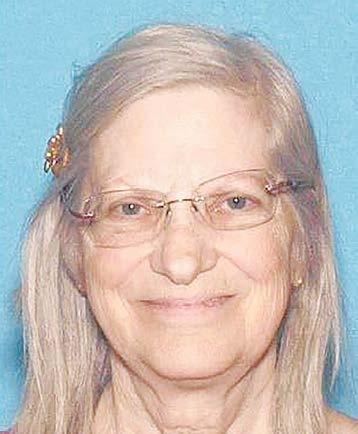
100 members from various counties currently searching. Burke was reportedly seen on Nov. 19 at about 4:30 p.m. in the area of Moore Ranch Road.
If you have seen Burke or know where she is, please contact Santa Cruz County Sheriffs dispatch at 831-471-1121. n
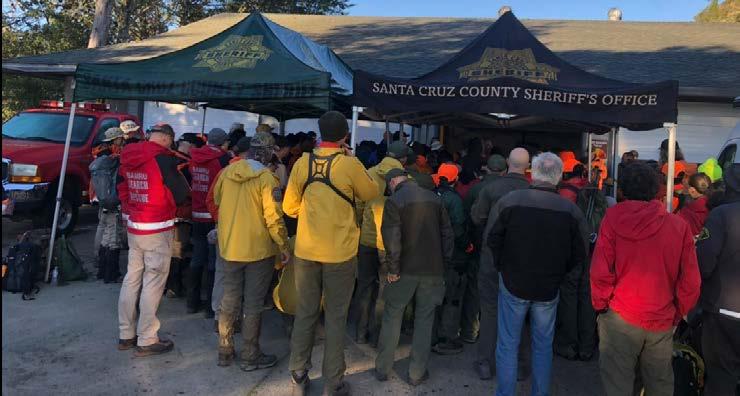








“Danielle Staley” from page 6
“I probably talked to her at least four times a week, and we text other days… She’s in communication with us. She’s not trying to disappear from her family,” Miller told KSL-TV. “You know, if she has gone missing, I feel that she would have done everything in her power to get a call out to one of us to let us know that she was OK.”
Apparently, she was wrong. More than two weeks after being reported missing, Staley contacted the Santa Cruz County Sheriff’s Office to tell them she was safe.
On Nov. 23, the sheriff’s office issued a press release at 8:09 a.m. announcing she was found. She has since been in touch with her family, according to the sheriff’s office.
The family is asking for privacy. n


SBy Jon Chown
anta Cruz County Supervisors opted to not approve an ordinance on battery energy storage systems on Nov. 18, instead deciding to send the ordinance back to staff for improvements. They will vote again on Jan. 13.
Battery energy storage systems allow solar and wind energy to be stored and used later — helping stabilize the electrical grid, lower energy costs and reduce greenhouse gas emissions. The new ordinance will guide how and where these systems can be built in unincorporated Santa Cruz County. Named the Energy
Storage Combining District Ordinance, it defines eligible sites, safety and environmental requirements, application procedures, and oversight responsibilities. It includes environmental review to assess potential risks, public review and hearings for proposed projects, and mandates regular updates on safety research and technology improvements.
However, the ordinance was viewed to not adequately address issues concerning ingress and egress during emergencies, requiring skilled labor, water runoff during a fire, soil and water analysis and other issues. For these
Energy have consistently said they will do so if a local ordinance is delayed.
With this in mind, supervisors wrestled with an ordinance that much of the public, and many supervisors, saw as too weak, but far better than nothing at all. During the discussion on Nov. 18, Supervisor Kim De Serpa (District 2) presented several improvements she had in mind, including requiring certified electricians be hired.
“I’ve done some research and can see that many of the fires happened due to improperly installed batteries,” she said. However, she


Saturday, December 6 10 a.m. – 3 p.m.



Once the permits are in place, the project would likely be sold to PG&E or another entity to build and operate.
Dave Martone, speaking on behalf of the Pajaro Valley Fire Protection District, the fire agency with jurisdiction over the proposed site, urged the supervisors to adopt the ordinance on Nov. 18.


“Without a Santa Cruz County ordinance in place, our community will be subject to the decisions of state agencies, resulting in a significant loss of local control,” he said. “This is particularly concerning should this potentially hazardous facility move forward. The ability to regulate and respond at the local level is crucial.”
Many others urged the board to adopt the ordinance as it was on Nov. 18, including former supervisor Bruce McPherson and Casey Van Den Heuvel, vice president of the Monterey Bay Central Labor Council. However, there were also quite a few people asking the supervisors to slow down and improve the ordinance.
Corralitos resident Karrell Reader, who doesn’t live far from the proposed site on Minto Road, presented a range of issues the ordinance still needed to address, the first being protecting sites from vandalism or sabotage.

“I think we ned to put something down about making that site hardened,” she said, pointing out that all it would take is one angry, mentally unstable person to do a lot of damage. Other issues she had concerned water runoff, and how the soil, water and air would be tested for pollution.
Some wanted it to basically ban the technology all together. However, if local regulation is deemed too strict, AB205 allows the California Energy Commission to override local rules due to “public convenience and necessity.”
“It’s clear that if you make efforts to outlaw sites like the one we’re looking at on Mento Road with a local ordinance, the local terms will just be circumvented through the state process,” said Supervisor Manu Koenig of District 1.
After hours of discussion on the ordinance, the supervisors voted to send it back for revision. Due to the timeline, it was later announced that a vote on the revised ordinance
for Jan. 13. n




“Budget Cuts” from page 7
Noel Brand, a teacher at Cesar Chavez Middle School, had another idea to reduce spending. “I think that we should close the towers,” she said, pointing out that there were empty classrooms at different sites all over the district. “Why are we paying for this massively humungous building?”
While the majority of those speaking were teachers, many parents, such as Campos, also spoke out. Michael Christensen, a parent of a child in special education, said his boy’s teachers were saints.
“They gave our kid a chance to have a voice. He’s growing. He’s thriving. He’s having all these incredible changes … and now to hear all these cuts that you want to have happen. These really are the most vulnerable. My son’s name is Jonah, but I have to say his name because he can’t. So we need to be his voice,” the father said.
On average, school districts across the state spend about $18,000 per student, while PVUSD spends more than $20,000 per student. At the beginning of the year the district had planned to cut about 100 positions in order to save $5 million, but that was rejected by the board. Instead, about 60 positions were cut. Kit Bragg, assistant superintendent of human resources, said that had more been cut in February, the pain would be less now. Among the current proposed cuts are 15 full-time counselors, about 12 intervention specialists, 13 mental health specialists and 40 behavioral technicians.
After public comment was over the trustees weighed in. Misty Navarro pointed out that it took six months to find a CBO and the district could not operate without one, and that the superintendent’s raise was approved in June. She also made a point of having Castillo discuss how the County Office of Education, along with seven other school district CBOs, agreed with the plan being put forward.
Trustee Gabriel Medina started yelling at his fellow trustees, the superintendent and


staff. He blamed the board and administration for declining enrollment, and said that the CBO and superintendent were overpaid. He suggested balancing the budget by demanding grants from “big companies that are poisoning our community.” Then, in Spanish, he launched a soft attack on Castillo, questioning how he could accept making such a high salary when there are families that can’t eat.
“I came here when I was 17. I used to pick grapes and I was told, ‘you need to start studying.’ I worked during the day and I studied at night and that’s the reason why I’m here to support education,” Castillo replied in Spanish. “I work for what I make.”
After losing that exchange, Medina then moved on to wanting to use the district’s reserves of $46 million. “I think this is the perfect time,” he said.
Castillo pointed out that law requires districts to have a reserve of 3% of the budget, and if reserves were used to fill the deficit, the district would face bankruptcy and takeover in just two years. Medina countered that the budget projections were just assumptions and said that if the district went broke, it could just ask the county for $5 million.
“You are wrong. The county will not just give us the money,” Castillo said.
Other ideas with merit were brought up, including closing schools, renting facilities out or even selling them.
“I heard a lot of good suggestions tonight,” said Board President Olivia Flores. “We need to find a good balance.”
The meeting lasted nearly eight hours. The issue will be brought back before the board on Dec. 11 for more discussion and possibly a decision. n

Jean-Jacques Rousseau is often quoted as saying artists have to learn to “know themselves sufficiently” in order to achieve a state of spontaneity that will reveal their innermost selves. My illustration intends to show a modern version of Leonardo’s Vitruvian Man. While Leonardo’s classic drawing depicts the perfect man, my rendering displays what Rousseau’s more realistic vision might express: an imperfect man or woman as seen with awkward mechanical appendages that may be regarded as strengths rather than limitations.
By discovering how to use the shortcomings of one’s mind, body, and emotions, artists can learn to manipulate their own unique qualities to best convey their personal creative message. Our own foibles, strengths, and tendencies then become the tools of our expression.
In fact, Rousseau also said that by learning to explain another’s thinker’s contribution to the world of ideas in a convincing manner, it would help artists and writers learn to express their own ideas as well. When artists know full well their own limitations and strive to express them honestly, the results can achieve a new resonance with one’s audience.
Indeed, a full understanding of one’s habits, pitfalls, and how we react in certain situations — rather than perceived as shortcomings — can be turned into the uniqueness of our personal message.

As Moshe Feldenkrais wrote in The Potent Self – A Guide to Spontaneity, “The use we make of ourselves is the best we can muster with the means at our command at that moment.”
For beginning artists, understanding and accepting one’s imperfections takes the risk of failure out of the equation — making it easier to embark.
By Joe Ortiz

In The Creative Mind and Method, authors Jack and Thatcher Summerfield wrote: “There is a kind of heroic selfcontrol which all the artists possess. . . [W]hatever is truly creative must come out of the experience of the creator . . . not something he gets second hand. This is what makes it valid. This is artistic honesty.” Most probably, AI wouldn’t be able to achieve this authenticity.
How could it? Unless it were to consume, process, and regurgitate all our writings, emails, texts, phone conversations — and go so far as to invent those very thoughts we have yet to experience and express.
Needless to say, if artists practice objective self-observation, they can trust the images and ideas that come from a particular work as truly their own creation. Our pitfalls, then, are courageously revealed through the veil of our own vulnerability.
And the newly rendered Vitruvian Man (or woman), then becomes a unique, subjective, and authentically-personal expression. Truly our own. n
Reader response: I’d love to hear your comments and questions. Email me at joe@gocapitola.com.


By Jim Rummonds
Everyone knows the old adage: “I’m from the government, and I’m here to help.” It comes to mind when we look at the Santa Cruz Metropolitan Transit District. Despite a large service area, ridership remains thin and the finances even thinner. If you’ve ever watched buses go by mostly empty, you see it. Would METRO exist if it had to survive on basic supply-and-demand? If not, why does it exist? Are there better options that serve both taxpayers and riders? In theory, transit reduces emissions by moving many people with one vehicle. Underused buses, however, are neither green nor frugal.
In FY 2024, METRO spent about $62.25 million to operate and made $9.2 million in operating revenue. The $53 million gap is covered by sales taxes, grants, and other subsidies from taxpayers. Public transit is expensive, but a deficit that large should force us to ask whether our model matches our geography and demand.
In many parts of the county, on-demand service (think Uber/Lyft or a county-contracted microtransit fleet) could deliver more rides per dollar with better coverage and shorter waits, especially where ridership is chronically low.
A big slice of funding comes from Measure D, the half-cent sales tax voters approved in 2016. In FY 2023/24, METRO received about $4.3 million from Measure D, plus additional state and federal grants for zero-emission buses and transit-oriented housing. Laudable goals, but they don’t fix ridership, cost per ride, or route mismatch. We should distinguish between good intentions (cleaner fleets, new buildings) and effective transportation (people actually using the service).
Ridership ticked up about 7% in Q4

FY 2024 over the prior year, but it remains roughly 28% below pre-pandemic levels. The Highway 17 Express was down about 52% compared to the same quarter in 2019. Building a countywide system around lowutilization routes is a recipe for red ink.
METRO’s “Reimagine Santa Cruz METRO” aims to boost ridership 35% over five years with more frequency, simpler routes, and greener buses. The operative word here is reimagine. If frequency is paired with route redesign, demand-responsive service, and performance metrics (e.g., cost per passenger, riders per service hour), then we’re talking reform. If not, it’s a slogan.
Mass transit is often invoked for equity and environmental reasons—and those matter. But a system that few use fails the very communities it’s supposed to serve. Politicians can win headlines with new buses and ribbon cuttings; riders win when service is reliable, affordable and convenient.
On-demand models flip the script from one-size-fits-all to right-size-for-this-trip.
Instead of forcing riders to fit fixed routes and rigid schedules, you meet them where they are.
A county could contract with ride-hail companies or operate its own microtransit (think EV vans or shuttles) that pool rides to lower cost per trip. Phone apps could be used and coverage could focus on first/last-mile gaps and low-density areas. Fares could be tied to equity discounts without the overhead of empty buses.
Transparent metrics (cost per passenger, average wait time, on-time pickup, emissions per trip) could be published so the public can judge performance.
This isn’t theory, Cities from Arlington, TX (Via), to West Sacramento (microtransit), to Summit, NJ (rideshare in lieu of new parking) have shown that targeted, on-demand service can reduce costs and increase satisfaction where fixed-route isn’t a fit.
We don’t have to blow up what works. A sane plan would protect high-performing corridors and convert chronically low-ridership routes to on-demand microtransit.
Deploy EVs first where utilization is strong, then scale as charging and duty cycles match real-world needs. Tie all grants and capital purchases to clear ridership and costper-ride outcomes.
The gap between $62.25 million in operating costs and $9.2 million in operating revenue isn’t a rounding error. If we avert our eyes from that discrepancy, we’ll keep taxing more to transport fewer. Voters should expect quarterly dashboards: ridership by route, load factor, cost per passenger, subsidy per trip, and on-time performance.
If a route misses targets for several quarters, change it. If a microtransit zone beats fixed-route performance, scale it up. Accountability isn’t anti-transit; it is protransit done well.
There is no shortage of demand for public money. There is a shortage of discipline in how we deploy it. In a county with steep hills, dispersed neighborhoods, and variable demand, a hybrid network—fixed routes where they truly pencil out, ondemand everywhere else—will move more people, spend fewer dollars, and better meet environmental goals.
If METRO’s ridership remains too low to justify the expense and emissions of running large buses on fixed routes, then flexible alternatives—Uber-style partnerships, county-run microtransit, shared EV fleets—shouldn’t be taboo. They should be the plan.
This is an issue hiding in plain sight. The facts are knowable; the math is public. As Jefferson might put it: If a people in a democracy expect to be ignorant and still have a fiscally responsible government, they expect what never was and never will be.
Let’s match our means to our needs, our routes to our riders, and our ideals to what actually works. n

After two new Dodge Chargers joined the Capitola Police Department’s patrol fleet at the beginning of the year, the city is preparing to auction off one of its aging vehicles at the end of the year.
The department announced in February that the Chargers were rolling out on city streets after months of preparation involving the city’s fleet manager, mechanics, administrative staff and patrol officers who tested the cars before deployment. The new vehicles are part of an ongoing effort to modernize the fleet, which also includes Ford Explorers and BMW motorcycles.
One of those Explorers — Vehicle #161,
a 2016 model — will be leaving the fleet as the City Council on Nov. 13 approved a resolution declaring it as surplus and authorizing its sale at public auction. The SUV logged 95,662 miles and was deemed non-operational due to mechanical issues.
Under the city’s Administrative Policy III-8, surplus property originally purchased for more than $1,000 must be sold through a public auction or sealed bid unless another public agency expresses a need for it. City staff determined the Explorer was no longer viable for law enforcement use and recommended it be sent to auction.
Capitola officials have not yet announced the auction date, but once scheduled, the vehicle will be offered to the public along with other surplus items typically managed by the city’s Public Works Department. Such auctions, conducted periodically, often draw interest from residents, mechanics and secondhand dealers looking for inexpensive vehicles that can be repaired or parted out.
The department’s two new Chargers replace patrol cars approaching a decade of service — which is a typical lifespan for police vehicles because they endure daily use and are driven hard. n
The Elkhorn Slough Foundation announced Wednesday that Mark Silberstein will transition from his role as Executive Director after more than four decades of leading the organization. Silberstein will continue to serve as an advisor on special projects, including initiatives related to the recently completed Elkhorn Forever campaign.
A marine zoologist by training, Silberstein has focused his career on the conservation and study of coastal wetlands, including Elkhorn Slough, one of California’s most significant wetland ecosystems. He will remain in his executive role until a successor is appointed.
The Foundation’s Board of Directors has established a Transition Committee and engaged Potrero Group, a nonprofit executive search firm, to conduct a national search for the next director.
During Silberstein’s tenure, the Foundation developed into a nationally accredited land trust and significantly expanded conservation efforts. The organization has conserved more than 4,200 acres of watershed lands and restored over 2,000 acres of coastal and estuarine habitats, including areas critical to several endangered species.
Through a partnership with the Elkhorn Slough Reserve, managed by the California Department of

Wildlife with support from NOAA, the Foundation has helped protect over 6,500 acres of coastal habitats, farms, and ranches. The Reserve hosts thousands of students and tens of thousands of visitors annually, providing research and education programs on the coastal environment.
“Mark’s dedication and collaborative spirit have been truly transformative for the Elkhorn Slough Foundation,” said Susan Matcham-Hernandez, Board President. “His legacy is a strong and resilient organization with a deeply committed team and a string of conservation successes. Thanks to his leadership, this is a moment of strength for the Foundation, making it an excellent time for a leadership transition.”
The Elkhorn Forever campaign, completed under Silberstein’s leadership, raised over $13 million for new land acquisitions and ongoing stewardship. Silberstein said, “It has been my incredible honor and a privilege to work with so many dedicated people to conserve and restore Elkhorn Slough. I am confident the Foundation is ready for its next stage of growth, and I am excited to support the search for a new leader who will continue our vital work.” n
Community members can support the Foundation and its ongoing transition at elkhornslough.org.

From the time you find out you’re expecting, you dream of the first moment holding your baby. And Dominican Hospital’s Family Birth Center is here to help make that first “hello” as special as your new bundle of joy. We have a team of experts ready to guide you throughout your journey—from specially trained OB/GYN doctors and nurses, to midwives and board-certified lactation specialists. And our Level III NICU offers the highest level of maternity care in the Monterey Bay area should your baby need specialized support. Take a virtual tour of our Family Birth Center at DignityHealth.org/DominicanBirthCenter.

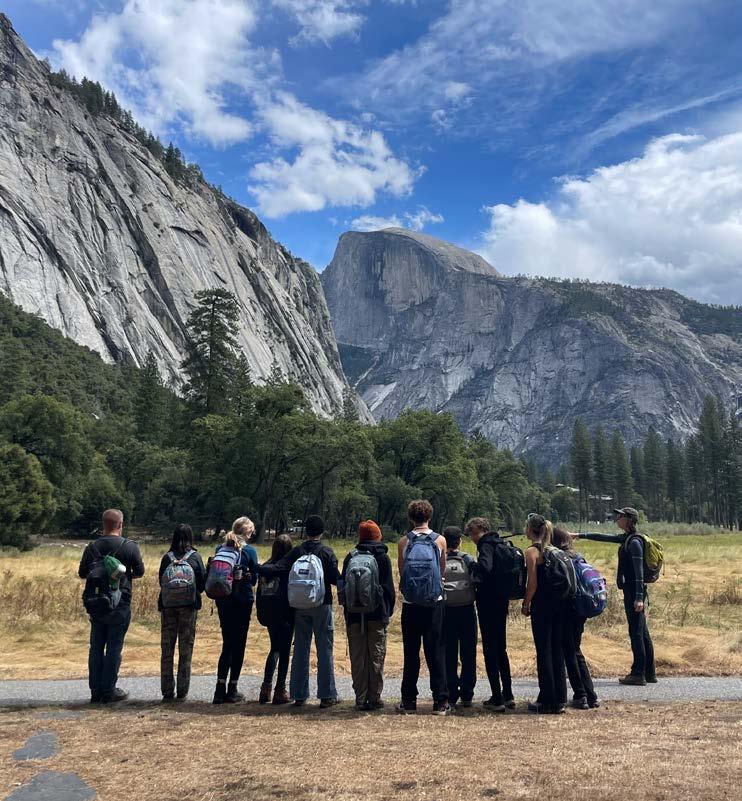



By Jon Chown
Santa Cruz County supervisors approved changes to the county’s cannabis tax code at their Nov. 18 board meeting that clear the way for cannabis consumption lounges and exempts non-cannabis goods from the county’s cannabis business tax.

The Board of Supervisors adopted the amendments to Santa Cruz County Code Chapter 4.06 after more than a year of discussion, community meetings and ordinance revisions led by the county’s Cannabis Licensing Office.
Under the newly approved tax changes, the county will exempt “ancillary goods” from being taxed extra at cannabis dispensaries. That means items such as pipes or rolling papers will be taxed at the normal 9.5% rate.
The bigger change is that cannabis lounges will be treated as a separate business type with a tax rate of just 1 percent. County staff said the changes are not expected to significantly affect tax revenue. Non-cannabis goods account for less than 2 percent of sales at existing retailers, and cannabis lounge sales are not projected to meaningfully alter total cannabis business tax collections.
Bryce Beryesssa, owner of Treehouse Dispensary, said the changes would be a big help as his businesses struggle to pay the taxes and stay open.
“For us, especially as we’re talking about allowing dispensaries to potentially have lounge operations and participate in commerce in other ways than just cannabis sales, this will be a big boon for us and allow us to kind of diversify,” he said.
The board has authority to set cannabis tax rates between 0 and 10 percent. Fifth District Supervisor Monica Martinez questioned the low rate and said it incentivized
cannabis use onsite, which could create safety problems. Meanwhile, the county is facing a budget crisis, and it could use the tax money.
“We’re asking our departments to tighten budgets, delay projects and do more with less. In that context, I think it’s fair to ask why we would exempt or lower taxes for any industry,” She said.
Manu Koenig (District 1) countered that the county has such a punitive tax system for cannabis that it is driving consumers to the black market and forcing legal businesses to file bankruptcy. “This is just to try to level the playing field a little bit,” he said.
Third District Supervisor Justin Cummings, and Fourth District Supervisor Felipe Hernandez both agreed with Koenig. “What incentive is there for people to go to these businesses if they wind up paying more than they would on the black market?” Cummings asked.
Hernandez pointed out that the county is a friend to agriculture and cannabis is an agricultural product. He also said the county is not taxing other agricultural commodities in the same way. For instance, apple farms and berry farms are not taxed extra if customers pick the fruit themselves.
“If there is special treatment, it’s that we’re taxing them more than everybody else in the business,” he said.
After some discussion, the board split 3-2, with Second District Supervisor Kimberley De Serpa joining Martinez in dissent. The board’s action concludes a process that began in November 2023, when supervisors directed the Cannabis Licensing Office to gather public feedback on potential updates to local cannabis rules, including onsite consumption. n












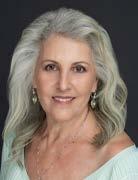



The U.S. Department of the Interior released its formal Five-Year Outer Continental Shelf (OCS) Oil and Gas Leasing Program in November, setting up six potential offshore lease sales along the California coast between 2027 and 2032.
The proposal immediately drew opposition from Santa Cruz County officials, who said they intend to push for California’s removal from the plan.
The federal proposal outlines three lease sales off Southern California in 2027, 2029 and 2030; two off Central California in 2027 and 2029; and one sale off Northern California in 2029. The agency must now open a 60-day public comment period before the plan can be finalized.
California has not seen new federal offshore oil and gas leasing in decades. State and local officials have historically opposed new drilling, citing the state’s long-standing coastal protections and concerns about potential impacts on fisheries, marine life and tourism.
Supporters of the federal plan, including some energy-industry groups, say expanded leasing is needed to bolster domestic production and reduce reliance on foreign oil.
Santa Cruz County Supervisor Justin Cummings condemned the plan’s release.
“It is sickening to learn that the Trump administration has relaunched the outer continental shelf oil and gas leasing program, but not surprising,” Cummings said. “This is why we have been building a local government coalition to fight back against these efforts and fight back we will.”


— now includes

Mendocino, Sonoma, Marin and Santa Cruz counties, along with the City of Santa Cruz. Additional cities and counties are expected to consider resolutions in the coming weeks.
Supervisor Kim De Serpa, who joined Cummings in opposing the federal plan, said she expects support from local governments across the state.
“We are standing shoulder to shoulder to fight against the administration’s plan to drill for oil off the entire coast of California,” De Serpa said. “I feel certain that supervisors in Central Coast counties and throughout California will stand together to protect our coastal waters, support our state and federal
representatives, and stop this action. We continue to insist on protection of our coastlines and waters, our tourism industry and fisheries, and our marine mammals and all creatures in our Pacific Ocean.”
Interior officials have not indicated whether the agency plans to hold in-person public hearings, which have been standard in past leasing cycles. The draft plan could be revised after the public comment period concludes.
A coalition website is expected to provide updates and links for residents wishing to submit comments on the federal proposal during the upcoming review window. n
The coalition — which traces its origins to a similar local-government coordination effort formed in 1980 — now includes Humboldt, Mendocino, Sonoma, Marin and Santa Cruz counties, along with the City of Santa Cruz. Additional cities and counties are expected to consider resolutions in the coming weeks.
By Rachél Lather, President, Soquel Creek Water District Board of Directors
As we prepare to welcome a new year, I’ve been reflecting on just how transformative 2025 has been for Soquel Creek Water District, our customers, and our regional partners. At the start of the year, I shared that 2025 would be pivotal — and with the year nearly behind us, that prediction has certainly proven true.
Without question, the most exciting milestones of 2025 revolved around the Pure Water Soquel Groundwater Replenishment and Seawater Intrusion Prevention Project.
After more than a decade of analysis, planning, funding, and construction, the District is embarking on fulfilling its long-standing commitment
to secure a new, safe, and reliable water source for our customers.
This achievement represents much more than an engineering and environmental success — it’s a community success. It reflects years of thoughtful public engagement, collaboration with local and regional partners, and the support and patience of our customers. Pure Water Soquel is completing the startup and commissioning, and we are excited to be on the cusp of replenishing the groundwater basin, protecting it from seawater intrusion, and strengthening long-term water reliability for generations ahead.

This year, we were honored to be recognized as the 2025 Organization of the Year by the Santa Cruz Chamber of Commerce and medium-size
Agency of the Year by California WateReuse Association.
This year also reminded us just how important strong partnerships are. As noted earlier this year, delivering Pure Water Soquel required more interagency collaboration than any project in our history. In 2025, we carried that spirit forward.
We continued to work closely with the Mid-County Groundwater Agency, neighboring water providers, and state and federal partners. We also partnered with the City of Santa Cruz to expand our beloved Water Education Assembly program this year.
The Assembly program provides lessons about water conservation, pollution prevention, protecting watersheds, and the hydrologic cycle through unique, crowd-pleasing stage shows.

Alongside our water supply achievements, the District continued leading the way in water quality stewardship. This year included significant progress on addressing California’s new hexavalent chromium (chrome-6) regulations, including public outreach, pilot testing, and advancing the design for a treatment system for three wells in the Seascape area.
Through all these efforts, one thing has remained constant: your drinking water has remained safe, and we have kept our community fully informed at every step.
Even as we achieved major project milestones, our day-to-day mission never changed. In 2025, the District continued:
• Maintaining and upgrading critical water infrastructure
“Milestones” page 20





“Milestones” from page 19
• Proactively managing groundwater resources
• Delivering clean drinking water efficiently and reliably
• Supporting customers with conservation tools and programs
• Using technology and data to enhance system performance
Whether the year brought heavy winter rains or long dry spells, our community continued to shine in its commitment to using water wisely.



At the beginning of 2025, I shared that Soquel Creek Water District had evolved from being solely a water purveyor into a water purification and groundwater replenishment agency. Now, after a year of major accomplishments and important lessons learned, that expanded role feels more real — and more hopeful — than ever.
As we move into 2026, we carry forward a profound sense of momentum, responsibility, and gratitude. We will remain nimble, collaborative, and forward-thinking as we continue planning for long-term water reliability in a changing climate.
I want to extend my heartfelt appreciation to our customers, partners, and community members. Through droughts,
As we move into 2026, we carry forward a profound sense of momentum, responsibility, and gratitude. We will remain nimble, collaborative, and forward-thinking as we continue planning for long-term water reliability in a changing climate.
construction impacts, and major regional challenges, you have remained engaged, supportive, and resilient. The progress we celebrate today belongs to all of us. Happy New Year and thank you for continuing to do your part as we proudly continue to do ours. n
•••
Ms. Lather has been on the Board of Directors since 2016, became President of the Board in 2020, and is serving again as President through 2025. She is a resident of Aptos and a retired civil engineer with more than 40 years of experience. Ms. Lather also serves on the Santa Cruz County Local Agency Formation Commission.





By Erica Padilla Chavez
Right now, many of our neighbors are wondering how they’ll put food on the table as challenging economic conditions continue to deepen. Families across Santa Cruz County are being squeezed by rising prices, lay-off’s, high housing costs, and reduced access to safety net resources they’ve relied on in the past. More and more people, many who have never needed help before, are at our doorstep.
At Second Harvest Food Bank Santa Cruz County, we are seeing the effects firsthand. Calls for help are rising. Our partner agencies, from local food pantries to school sites to community organizations, are reporting longer lines and increased urgency. These aren’t abstract statistics. These are our neighbors: working parents juggling multiple jobs, seniors on fixed incomes, families recovering from recent economic disruptions, and young people struggling to afford basic necessities.
These are not ordinary times. Month after month, families are being stretched thinner. And as we enter what is traditionally our busiest season, from November through February, the need has grown beyond anything we’ve seen in recent years.
We are working hard to meet this extraordinary demand. Our team is increasing distributions of fresh produce and pantry staples, securing emergency supplies, and

working closely with community partners to make sure no family slips through the cracks. But as committed as we are, we cannot do this alone.
Our food bank was already navigating significant pressure before the current economic challenges intensified. Federal food shipments that once supplemented our shelves have been inconsistent. Meanwhile, the cost of food, fuel, labor, and transportation continues to rise. At the same time, demand for food assistance is increasing, creating a widening gap between what people need and the resources available to meet that need.
And yet, in the midst of these difficulties, something extraordinary continues to stand out: the resilience, generosity, and compassion of the people of Santa Cruz County. That is why we say: Extraordinary times call for extraordinary people.
Extraordinary people are not only those leading large-scale initiatives. They are the volunteers who sort apples and pack produce boxes on weekday mornings. They are the local farmers and fisheries who donate fresh, nutritious food even as they shoulder their own challenges. They are the donors who give what they can, even when their own budgets feel tight.
“Second Harvest” page 21















And they are the partner agencies — nonprofits, schools, faith communities, neighborhood pantries —working beside us every day to make sure food reaches everyone who needs it.
Their commitment is the backbone of our work. Without them, this communitywide effort simply wouldn’t be possible.
Today, we are asking our community to join us once again. Every dollar donated helps provide three healthy meals. Every hour volunteered directly supports a family who might otherwise go without. Every shared message brings in more helping hands during a time when the need is great.
And right now, that help matters more than ever.
Economic pressures aren’t letting up. Families who were barely getting by are now finding themselves in crisis. Food banks across California are responding to increased demand, and here at home, we are committed to ensuring that healthy food is accessible to everyone who needs it.
This is a moment for us to rise together. When our neighbors face hunger, Santa Cruz County steps forward, not because it is easy, but because it reflects who we are.
Acts of generosity don’t just put food on a table. They offer stability. They offer dignity. They offer hope. The impact of your action today will ripple outward
Every dollar donated helps provide three healthy meals. Every hour volunteered directly supports a family who might otherwise go without. Every shared message brings in more helping hands during a time when the need is great.
— supporting families, strengthening communities, and reminding people that they are not alone.
To those already helping: thank you. To our farmers, partners, donors, and volunteers: your commitment is felt every single day, and your contributions make this work possible. And to those just learning about the growing need, we invite you to join us.
Our Holiday Fund & Food Drive runs through January 15, and your participation, whether by donating, volunteering, or organizing a fundraiser, will make an immediate and meaningful difference for families across Santa Cruz County.
Please visit thefoodbank.org to learn how you can help.
Because when extraordinary people come together in extraordinary times, no one in Santa Cruz County has to face hunger alone. n
Erica Padilla Chavez is the CEO of Second Harvest Food Bank Santa Cruz County.




Santa Cruz County Public Health is urging parents and caregivers to immediately stop using certain lots of ByHeart Whole Nutrition Infant Formula after reports linked the product to cases of infant botulism.
The voluntary recall, announced by the manufacturer and monitored by state and federal agencies, affects two batches of the formula distributed to nearly 400 stores across 37 California counties. Local investigators confirmed that recalled cans were sold at Target and Whole Foods stores in Santa Cruz County.
“County Environmental Health investigations indicated that the recalled product was sold in the community, therefore we are urging families to check their pantries to confirm they do not have this potentially contaminated product,” said Dr. Lisa Hernandez, Santa Cruz County Health Officer.
As of Nov. 11, no cases of infant botulism have been reported in Santa Cruz County, officials said.

The recall applies to ByHeart Whole Nutrition Infant Formula with the following batch information:
Lot 206VABP/Batch 251261P2, Use by: Dec. 1, 2026
Lot 206VABP/Batch 251131P2, Use by: Dec. 1, 2026
The batch code is printed on the bottom of the can, and the Universal Product Code (UPC) is 85004496800.
“Infant Formula” page 26

Farmworker communities in Watsonville raised concerns Tuesday about California’s regulation of the fumigant 1,3-dichloropropene (1,3-D), a synthetic pesticide used on berries, grapes, and other crops.
The concerns were voiced at a news conference organized by Californians for Pesticide Reform (CPR), where community members, educators, and public health professionals highlighted potential health risks from 1,3-D and other fumigants near local schools and daycare centers.
1,3-D is classified as a toxic air contaminant and a potential carcinogen. While it is banned in multiple countries, it continues to be applied in California. Under the state’s current regulation, the Department of Pesticide Regulation (DPR) set a target exposure level higher than the level recommended by the state’s Office of Environmental Health Hazard Assessment (OEHHA).
Public Health Nurse Erika Alfaro, a member of the Safe Ag Safe Schools coalition, said, “When science is ignored, injustice thrives.” Teachers in Watsonville noted that air monitoring near schools has recorded 1,3-D levels above OEHHA’s recommended thresholds.
Advocates emphasized that children in farmworker communities, many of whom are Latino or Indigenous, face disproportionate exposure. Oscar Ramos, a second-grade teacher in Salinas, speaking about the broader region, said, “We’re supposed to protect our children. Let’s protect them from these invisible but truly harmful pesticides.”
Californians for Pesticide Reform and allied organizations called for phasing out fumigants entirely, expanding school buffer zones from one-quarter mile to at least one mile, and implementing pilot projects using organic farming within those zones.


Cristina Gutierrez of the Fresno Pesticide Reform Coalition said legal challenges to the current DPR regulation are being considered and that advocacy groups plan to continue engaging with state and local officials to reduce pesticide exposure risks for children.
The Watsonville news conference was one of several across California organized by CPR to raise awareness about fumigant exposure in farmworker communities and to call for statewide policy changes aimed at protecting children’s health. n
Californians for Pesticide Reform and allied organizations called for phasing out fumigants entirely, expanding school buffer zones from one-quarter mile to at least one mile, and implementing pilot projects using organic farming within those zones.


By Risa D’Angeles

And so the last month of the year, December, has begun. The Sun is now in the sign of the Archer (Sagittarius), Mercury is moving forward in Scorpio, and Advent, the four-week festival of preparation for the new light of Winter Solstice, began last Sunday, November 30th.
We have upcoming festivals, all reflecting the mysteries hidden in the message of the heavens — a full moon Sagittarius festival December 4th; St. Nicholas Feast Day December 6th; the Immaculate Conception of Mary December 8th; Mercury re-enters Sagittarius December 12th; the Feast of our Lady of Guadalupe December 13th, and Hanukkah, Jewish Festival of Lights, begins at sundown, Sunday, December 14th.
The days of Advent (light kindled in the darkness) always in the hopeful sign of Sagittarius. Advent — days in December dedicated to preparing for the new light of the new year (Winter Solstice).

In terms of light, every Sunday, households around the world light candles set in the circle of an Advent (evergreens) wreath. There are four candles on the wreath (3 violet colored, 1 pink). Each candle represents a week and a kingdom — mineral, plant, animal and human. The
With four lights in the heavens retrograde, it’s possible you will review many things from the past that affect you deeply –a person, resource, marriage, an intimacy, a friend. Observe, feel and review this loss and then turn it around towards gratitude. Make it a gift, a power received, something of great value to you. Review present desires and aspirations. Learn the difference between the two. Ask everyone what they value in you. You learn new realities about yourself.
You will see the need to ponder upon new, very different, more kind and inclusive ways of communicating. You will realize that you must listen now with curiosity, asking penetrating questions (instead of solving problems) when others speak. With deep listening, great insights occur for both speaker and listener. Search for ways also to have more trust. Then you can reveal the sterling truths about yourself without fear of retaliation. Transparency purifies the emotional body.
Care for your health in all ways, from morning ‘til night. Make this your priority. Begin by being in the sun and fresh air morning and evening. Then continue with morning exercise before breaking the night’s fast. Move onto green smoothies (almond milk, kale, lemon, beets, parsley, apple, pear, spirulina). Make cilantro pesto. Eat an avocado a day. Something, both dissolving and refining, occurs within. Seek to understand a partner’s sorrows. Listen and observe. Maintain quiet. Pray.
You consider what in the past brought you joy, what helped you be creative, and what you used to be enthusiastic (filled with God) about. You will see how you’ve become more than you thought you would be. Non-verbal ways of expressing yourself seem more appropriate now. Spend most time in gardens, museums, places with art, creativity and beauty. Explore all of nature. Explore what it means to be your natural self.

significance of this is that all of earth’s kingdoms await the new solstice light. This week, the first week of Advent, the mineral kingdom candle is lit. The 2nd week the plant kingdom, the 3rd week animal, and the 4th, the human kingdom is recognized.
Advent is Latin for “adventus” which means “something will soon arrive!” referring to Winter Solstice, when the Sun enters Capricorn (Tropic of Capricorn). After three days of quiet, the Sun begins to turn northward. The dark half of the year ends and we enter once again (each year) into the light half of the year.
In these weeks we also prepare for two most important festivals of light; — Hanukkah (festival and miracle of Light, December 14) and Christmas (birth of the holy child, symbol for the Light of the World, December 25th). These two festivals signify two different developmental stages of thought, knowledge and wisdom within humanity. Both offer the light of hope, and fulfil a promise — that within the darkness (of matter) is a glimmer of light. Advent is a time of stillness, a pause, awaiting the “arrival” (advent) of the new season (winter) with its the new rhythms. Life and light harmonize in the hearts of humanity. n
You may see family and friends from the past, perhaps from childhood. Family may seek to include you in celebrations, attempting to relive their past and offering traditions, which you have set aside. You remember younger years, when you were free and wandering, when the light you lived under came only from the sky, sun and stars. You sense impressions from the past seeking new interpretations. Plant blue morning glories inside the home and outside, too.
Over and over the same thoughts and ideas circulate through your mind. You want to discover all aspects of a puzzle, attempting to put all the pieces together. Thoughts come to mind but there’s an inability to articulate many of them. In this unusual retrograde silence, your eyes see more than ever before. It’s as if your senses shifted. As one sings, the other doesn’t. Seek to understand everyone’s truths. Let them stand equally with your truths. There is nothing higher than the truth.
When you look around at your living, working and garden environments, you realize you’ve come to love and appreciate and value all of them. Each offers a specific orderliness that you need. They calm and soothe your spirit and provide your life with a daily purpose and context. They relieve anxiety, provide stability. You realize these have been within you all along, since birth. This ability to see reality and your own strength and beauty has occurred within. Have gratitude for the past. It built your present/future. You have been loved all along.
Over the next several weeks and a bit beyond you assess your self-image and ways of thinking and feeling. The reality is not what others think of you but what you think of and truly recognize as yourself. And then you begin to create a new image. No longer an outer persona, but one more in depth is presented to the world. You no longer need to veil, arm or protect a self-image that’s no longer real. You become more and more authentic. There’s nothing to lose, nothing to gain. You’re the Buddha on the road, collecting sadness and sorrows of those you encounter, placing them in your sack.

Gene
Center
Sorrows and sadness from the past seek to be replaced with a new state of joy and gladness. All thoughts begin to be clothed in the light of compassion. There’s no longer the question of why. There’s only the feeling of goodness, that life’s precious and beautiful and paradox is acceptable. You will walk to a door in the next several weeks. You will open that door and then shut it behind you. You will see a mountain with an ascending light. You glimpse scenes from your life ahead. Have good sturdy shoes. It’s the Path to the snowy mountains hiding the land of Shamballa.
This retrograde time has quite an intense storyline. You have accomplished much in the past months. Within events that have come to a close, be aware of new insights, understandings and revelations appearing subtly. All previous experiences, especially sadness, coalesce into new states of knowledge. An old friend makes contact; strange twists and turns of relationships begin to ease. Defeat becomes triumph. Speak your mind with truth about your experiences. Someone cries. You comfort them. Others adapt to you. Frustration turns to opportunity. Art finally calls.
You don’t allow any glamorous nonsense to be in your life and environments. You only want practicality. Because everything seems to be changing every moment. This will continue. You will seek stability wherever you find it. New revelations occur. New thinking. You are inventive. Use all of these in your work then present them to the world. Allow others to respond (or not). You seek collaboration. You know your path. It’s always the surprising unusual view. Community calls. You create it.
Up till now you’ve had hopes, dreams and wishes of what you want in your future. All of these you wish to share with others. These may change in the coming months. You will accept where you are and the situations you’re in. An old dilemma becomes a great Truth. A philosophy is differently interpreted and you cherish it like a golden apple, a golden I Ching coin. Old friends drop away seeking a different path. Your work expands. You build within the crystal square. A triangle of a village appears complete with trees.
Program Boosted On Tuesday, Nov. 18, Tom Am Rhein presented a $1,000 check to the Gene Hoularis and Waldo Rodriguez Youth Center Culinary Program on behalf of the Susan Kim Am Rhein Memorial Fund, that is part of the Agri-Culture organization.
Am Rhein set up the fund through AgriCulture after his wife passed away. Susan had strong interest in culinary arts, and also programs that help develop skills for the youth. Earlier this year, the Youth Center held a Chef of Steel competition. Participants from that competition then prepared a meal served at Mr. Am Rhein’s home that guests paid to enjoy.
“This is exactly what I had hoped for when setting up the fund in memory of Susan,” Am Rhein said. “This event allowed these young chefs to take the next step of creating a menu, preparing a dinner and serving it in an environment that requires discipline, problem solving skills and professional interaction with adults. At the same time, all participants and attendees gained increased knowledge of the fabulous and healthy foods and beverages produced on our local farms.” n
“Infant Formula” from page 24
Infant botulism is a rare but serious illness that can cause muscle weakness, poor feeding, and difficulty breathing. “If not treated quickly, botulism can be fatal,” Hernandez said. “Caregivers should contact their healthcare provider if their baby shows any symptoms.”
Parents and caregivers are advised to stop using recalled formula immediately, clean any surfaces or items that may have come into contact with it, and watch for symptoms, which can take several weeks to appear. These may include constipation, poor feeding, weak cry, or loss of head control.
Those whose infants have consumed the recalled product should keep the packaging and lot number for reporting and contact their healthcare provider if symptoms appear.
Healthcare providers who suspect a case of infant botulism are urged to contact the Infant Botulism Treatment and Prevention Program at 510-231-7600 for consultation, available 24 hours a day. Suspected cases must also be reported to the California Department of Public Health.
n
•••
For more information, visit www.cdph.ca.gov or contact Santa Cruz County Public Health.
By Tony Tomeo

Oregon gardens get to display superior peony bloom for spring and summer. That is one of several advantages of winter chill. Some plant species appreciate a bit more chill than they can get here. It enhances their performance. However, chill also limits winter bloom. Not many plants want to bloom while the weather is cool, and pollinators are less active.
That is one of several advantages of mild winter weather. It allows flowers that bloom for autumn to bloom a bit later. It allows a few of the flowers that bloom for spring to bloom a bit earlier. There is not much time between the last flowers of autumn and the first flowers of spring. Winter bloom is not as important here as where winters are longer and chillier.
Even if less important here, reliable winter bloom might be a bit more challenging. Some plants that bloom for winter in other climates might be hesitant to bloom for winter locally. After all, they prefer to bloom while the weather is cool. Mild chill might be unsatisfactory. Cool season annuals are unpredictable, but are likely the most reliable for winter bloom.
Of the popular cool season annuals, cyclamen is actually perennial. If not removed at the end of its season, it goes dormant for summer, and regenerates for subsequent winters. It does not bloom as profusely as it originally did, but adds color to mixed small perennials or ground covers that do not bloom for winter. Some types of primrose are also perennial.
A few perennials bloom sporadically and randomly throughout the year, including winter. African daisy and euryops daisy typically do not bloom as much as they do during warm weather, but can. Euryops daisy may actually bloom best during winter. Bird

of Paradise flowers mature so slowly that those that begin during autumn might finish through winter.
Witch hazel, daphne, heather, mahonia and winter jasmine bloom for winter, but perhaps not as impressively as for other climates. Some camellia bloom abundantly while others bloom sporadically. Bergenia may bloom later here than for other climates. Forsythia and some spring bulbs, especially daffodil, bloom so early that they seem to bloom for winter.
•••
Floral fragrance is likely the primary asset of sweet box, **Sarcococca ruscifolia**. However, the splendidly glossy and evergreen foliage is as appealing as that of any of the various boxwoods. It is darker and richer green, with orderly arrangement on nimble and arching stems. Individual leaves are small but larger than boxwood leaves, and with pointier tips.
Sweet box blooms during winter, with deliciously fragrant but tiny pale white flowers that are not much to see. They are unlikely to get credit for their impressive fragrance without close investigation for its source. Vigorous plants may produce a few rich maroon berries that contrast delightfully with the rich green foliage. Cut stems work well with cut flowers.
Because it is naturally an understory species, sweet box not only tolerates partial shade, but actually prefers it. Harsh exposure fades its foliage. The dense foliage on wiry stems adapts to low hedging. It is better with alternating cane pruning to remove old stems and promote fresh basal growth. Overgrown specimens respond quite favorably to coppicing. They grow to three feet high.
•••
Tony Tomeo can be contacted at tonytomeo.com.




Mondays
BRIDGE CLUB
10:30 a.m.-Noon, 7695 Soquel Dr, Aptos, CA 95003
The Aptos Branch Library hosts Bridge Club sessions on Mondays (except holidays).
Bridge Club is a partnership between Santa Cruz County Parks and Santa Cruz Public Libraries.

Register at scparks.com or in-person the day of the event.
OVEREATERS ANONYMOUS
7 p.m., Congregational Church Preschool Meeting Room, 4951 Soquel Ave., Soquel
Overeaters Anonymous welcomes any type of eating disorder or problems with food. No dues, fees or weigh-ins.
Meetings take place at Congregational Church in the preschool meeting room.
All are welcome.
Overeaters Anonymous (OA) has meetings daily both in-person and on-line in Santa Cruz County at santacruzoa.org
Tuesdays
BINGO AT MCSC
1-3 p.m., Mid County Senior Center, 829 Bay Avenue, Capitola (behind the Party Store)

TUESDAY NIGHT SALSA SOCIAL
Hot Dogs, Chili and snacks available for purchase courtesy of our Snack Shack. A lot of fun for all and a possible big win! Door opens at 12:15 p.m.
7 – 10 p.m., Abbott Square Market, 725 Front St., Santa Cruz Join a midweek salsa social at Abbott Square Market with salsa, cumbia, merengue, and bachata. Free and open to all skill levels—just bring energy and dancing shoes.
More information: www.abbottsquaremarket.com
Thursdays
SCOTTISH COUNTRY DANCING
7:15-9:15 p.m., Peace United Church 900 High St, Santa Cruz. Beginners welcome, partners not required. $10 each. First class free. Come dance!
HAPPY HOUR
5-7 p.m., California Coffee, 9105 Soquel Drive, Aptos California Coffee in Redwood Village hosts an open mic happy hour every week.
Third Thursdays SIP AND STROLL
6-9 p.m. (check-in 5 p.m.), Seacliff Inn, 7500 Old Dominion Court, Aptos
Come to the Seacliff Inn: Tapestry Collection by Hilton, for a Sip & Stroll event where local artists to show and sell their works.
Wines are 30% off, and the featured winery will offer tastings of three varietals for $10 per person. Details of this and more Sevy’s events at www.sevysbarand kitchen.com/events
Fridays (except First Friday of the Month)
LA SELVA BEACH LIBRARY BRIDGE GROUP
10:30-Noon, La Selva Beach Public Library, 316 Estrella Ave. Come for bridge from 10:30 to noon at the La Selva Beach library. Call La Selva Library to reserve your seat: 831-427-7710.
First Saturdays
CAPITOLA BEACH CLEANUP
9-10 a.m., Esplanade Park
Help preserve and maintain the coastal beauty of Capitola. Join a beach cleanup every month at Esplanade Park.
Keep Capitola Salty is a grassroots movement dedicated to responsible efforts helping to maintain and preserve the environment, scenic beauty and coastal recreational activities of Capitola.
This movement is always looking for volunteers. Email KeepCapitolaSalty@gmail.com.
Second Saturdays
HISTORICAL AIRCRAFT DISPLAY
10 a.m.-4 p.m., Watsonville Municipal Airport, 100 Aviation Way
Watsonville Municipal Airport hosts a Historical Aircraft Display every second Saturday. Admission is free.
Saturdays and Sundays
ELKHORN SLOUGH: FREE TOUR OF THE PRESERVE
10 a.m. | 11 a.m., Elkhorn Slough Reserve, 1700 Elkhorn Road, Watsonville
Docent-led tours offer visitors a guided introduction to Elkhorn Slough’s remarkable landscapes, wildlife, and tidal wetlands.
Each walk is tailored to participants’ interests and abilities, creating an engaging, educational experience.
Space is limited, and tours are first-come, firstserved.
Guests can sign up at the Visitor Center front desk or call ahead the same morning at (831) 728-2822 for availability.
Second Sundays
SUNDAY MORNING BREAKFAST
8:30-11 a.m., Market Street Senior Center, 222 Market Street, Santa Cruz
The Market Street Senior Center warmly invites the
WEDNESDAYS
community for a delightful Sunday morning breakfast every second Sunday, this month on June 8.
Indulge in a delicious array of scrambled eggs, sausage, hash browns, pancakes, coffee, tea or cocoa. Donation: Adults, $12; children, $6 Inside seating is available, and To-Go orders are welcomed. For information, visit www.marketstreetseniorcenter.org or call (831) 423-6640.
Wednesday December 3
MOE’S ALLEY AND KPIG PRESENT ANA POPOVIC W/ ANTHONY ARYA
Doors 6 p.m. | Show 7 p.m., The Rio Theatre, 1205 Soquel Ave, Santa Cruz
Blues guitarist and singer Ana Popovic takes the stage with special guest Anthony Arya. Tickets are $35 in advance, $40 day of show, and all ages are welcome.
For more information or to purchase tickets, visit http://www. riotheatre.com/events-2/2025/12/03/anapopovic.
Thursday December 4
FULL MOON HIKE AT QUAIL HOLLOW
6 – 8:30 p.m., Quail Hollow Ranch County Park 800 Quail Hollow Road, Felton
Enjoy a quiet exploration of Quail Hollow Ranch, under the moonlight.
On this one-hour guided hike on the lower trails, you can search for critters and meander through the forest. Bring flashlights and/or a headlamp (though you may try to hike without them), and some drinking water. Dress for the weather and wear good walking shoes.
Meet with your guide outside the ranch house before heading out.
For ages 8 & up. (Ages 15 and under must be accompanied by an adult.)
Space is limited for this free activity. Register in advance by calling 831-454-7901.
DOWNTOWN SANTA CRUZ — 1 – 5 PM, Cedar St. & Church St.
A bustling market featuring certified organic produce, artisanal foods, seafood, baked goods, flowers, and prepared foods. EBT/SNAP accepted, and Market Match doubles purchases (up to $10). Free entry; metered and garage parking available — free after 6 PM. Live local music and street closures add vibrant atmosphere. Full vendor list and updates at santacruzfarmersmarket.org.
FRIDAYS

WATSONVILLE (Certified) — 3 – 7 PM, Peck St & Main St. Allyear market offering Watsonville-grown produce, seafood, dairy, flowers, hot foods, artisan goods. Free entry; metered parking available. EBT/SNAP + Market Match. Vendor news via local AARP events.
SATURDAYS
WESTSIDE SANTA CRUZ — 9 AM – 1 PM, Mission St Ext & Western Dr.
Yearround market offering 100% certified-organic produce, seafood, meats, flowers, prepared meals, espresso bar, and artisan goods. Free parking on site. EBT/SNAP + Market Match. Often hosts pop-up breakfast events. Perfect for starting your weekend with fresh food and community energy. Full details at santacruzfarmersmarket.org.
APTOS (at Cabrillo College) — 8 AM – Noon, 6500 Soquel Drive Celebrated coastal market with over 90 vendors selling produce, sustainable seafood, artisan breads, honey, meats, flowers, and hot food. EBT/WIC accepted. Free/year-round weekend oasis for local flavors and crafts. Hosted by MontereyBayFarmers.
SUNDAYS
LIVE OAK/EASTSIDE — 9 AM – 1 PM, 15th & East Cliff Dr, Santa Cruz Vibrant seaside Sunday market featuring organic produce, fresh seafood, hot food stands (Mexican, crepes, brunch), pastries, coffee, flowers. Free parking, EBT/SNAP, Market Match, and monthly family-oriented events.
WATSONVILLE FAIRGROUNDS — 9 AM – 4 PM, 2601 E Lake Ave, Santa Cruz County Fairgrounds Year-round market with wide selection of local produce, meats, seafood, crafts, and prepared foods. EBT/SNAP accepted. Parking onsite. Great for combining a market visit with other Fairgrounds activities.
28 / December 1st 2025 / Aptos Times www.tpgonlinedaily.com
Friday December 5
FALL SYMPHONIC ORCHESTRA CONCERT
7:30 p.m., Crocker Theater, Cabrillo College, 6500 Soquel Drive, Aptos
Cabrillo College’s Symphonic Orchestra presents its Fall curricular performance for MUS 58, with general admission seating.
Parking is free in Lot L.
Tickets are $15 general, $12.50 for seniors and students.
For more information, call the VAPA Box Office at (831) 4796154.
SOQUEL ELEMENTARY WINTER BOUTIQUE
3 – 7 p.m., Soquel Elementary School, 2700 Porter St. This event is free and open to the public. Food Truck onsite, 30+ vendors , Live holiday music by a local student band
Event hosted by Soquel Elementary Home & School Club Contact: winterboutique2025@gmail.com for more information
Friday December 5
Saturday December 6
48TH ANNUAL HERITAGE HOLIDAY CRAFT AND GIFT FAIR
Noon–9 p.m., Santa Cruz County Fairgrounds, 2601 E. Lake Ave., Watsonville
Browse three bustling buildings filled with handmade crafts, gifts, antiques, collectibles, toys, and more, many from longtime crafters.
Enjoy crowd-favorite foods in the Holiday Kitchens, then stroll through Sparky’s Holiday Lights starting at 5:30 p.m. For information and tickets, visit the Santa Cruz County Fairgrounds Foundation at https://fairgrounds-foundation.org.
Saturday December 6
APTOS HOLIDAY MARKET & TREE LIGHTING
1–4 p.m., Aptos Village Green, 151 Aptos Village Way, Aptos Join the Aptos Chamber of Commerce for a festive afternoon celebrating the holiday season. Families can visit Santa, shop more than 20 local vendors, and enjoy live entertainment including John Hibble on bagpipes, the Soquel Jazz Band, Aptos High Choir, Anjali & Friends, and Syner-gy Dance + Fitness. Children can take photos with Santa, and visitors can shop a variety of handmade items from jew-elry, candles, and ceramics to books, clothing, and wellness products. Complimentary cookies and Mexican hot chocolate will be served.
The event concludes with the community tree lighting sponsored by SockShop & Shoe Company Aptos. Free and open to all.
For more information, visit aptoschamber.com.
9 a.m. – 4 p.m., El Pájaro CDC Kitchen Incubator, 412 East Riverside Drive (and participating locations throughout the Pajaro Valley)
Shop local and discover products made, grown, and crafted in the Pajaro Valley at this festive community shopping event.
Start your day at the El Pájaro CDC Kitchen Incubator’s Winter Market, then explore participating businesses across Watsonville for holiday gifts, décor, and treats.
Presented by the Pajaro Valley Chamber of Commerce and El Pájaro CDC. For more information, visit pajarovalleychamber.com.
DOWNTOWN SANTA CRUZ HOLIDAY PARADE
10 a.m. – Noon, Pacific Avenue (Between Water and Locust Streets), Santa Cruz
The traditional holiday parade is the official kickoff for the winter holidays celebration.
One never knows exactly what to expect at the Parade, but you can be sure to expect the whole community to show up and have a great time. The man of the hour is
welcomed back to Downtown Santa Cruz. Bring the family or participate!
The parade route starts at the intersection of Laurel Street and Pacific Avenue and ends at the intersection of Pacific Avenue and Water Street.
The Holiday Parade is Rain or Shine!
FREE DOCUMENTARY: JACK HAS A PLAN
2 – 5:30 p.m., Resource Center for Nonviolence, 612 Ocean St., Santa Cruz
A screening of the documentary about Jack’s decision to stop treatment for a recurring brain tumor, followed by a panel discussion.
For information, call 831-454-8467.
7 p.m., Café Kuumbwa, 320 Cedar St., Santa Cruz Celebrate the winter solstice with Barbara Higbie, featuring Vicki Randle and Mia Pixley, in an evening of jazz and festive music.
Doors and dinner open at 6 p.m.
For tickets and more information, visit www.kuumbwajazz.org or call the box office at (831) 427-2227.
HOLIDAY BAKE SALE
10 a.m. – 2 p.m., Prophet Elias Greek Orthodox Church, 223 Church Street, Santa Cruz
Stop by the annual Holiday Bake Sale at Prophet Elias Greek Orthodox Church for a variety of delicious homemade treats. Enjoy festive goodies while supporting the church community.
For more information, visit https://www.propheteliassc.org or call (831) 429-6500.
FROST FEST
12 – 5 p.m., Santa Cruz Museum of Art & History, 705 Front St.
A festive pop-up market featuring local artisans and jewelers with ceramics, jewelry, crochet, paintings, stained glass, hot sauce, and more.
Support local creativity and find unique holiday gifts. More information at santacruzmah.org.
Saturday December 6
Sunday December 7
ANNUAL PARKSTORE HOLIDAY SALE
10 a.m.–4 p.m., Various locations in Santa Cruz County Friends of Santa Cruz State Parks host their annual Holiday Sale at four local state parks and beaches. Shoppers can enjoy 20% off gifts like local artwork, jewelry, books, maps, educational toys and more, with members receiving 30% off.
Locations:
• Natural Bridges State Beach, 2531 W. Cliff Dr., Santa Cruz
• Santa Cruz Mission State Historic Park, 144 School St., Santa Cruz
• Seacliff State Beach, 201 State Park Dr., Aptos
• Wilder Ranch State Park, 1401 Coast Rd., Santa Cruz Proceeds support local parks and beaches. For more information, visit santacruzstateparks.org.
Sunday December 7
ESPRESSIVO ORCHESTRA SERVES UP FOOD, WINE, AND FASCINATING MUSIC!
2 p.m., German Cultural Center Santa Cruz, 230 Plymouth Street Join Espressivo, Santa Cruz’s self-styled “small intense orchestra,” as it ushers in the festive season on Sunday, December 7 with a concert, a silent auction, and a tempting array of snacks and drinks. The event is a benefit concert for Espressivo, Santa Cruz’s self-styled “small intense orchestra,” which has entertained and enlightened audiences with its eclectic musical offerings since 2015.
Local professional musicians have volunteered their time to create a characteristically adventurous program of chamber music, including rarely performed works by England’s Gordon Jacob, the Parisian Francois Devienne, and America’s own Amy Beach.

Saturday December 6
11 a.m.–6 p.m., Watsonville’s Woman’s Club, 12 Brennan St., Watsonville
Experience Santa Cruz County’s first Native-focused arts market, featuring drums, flutes, pottery, wood carvings, gourd art, beadwork, jewelry, books, clay masks, amulets, vintage items, and more.
Organized by artist Becky Olvera Schultz, indigenous artists include Yaqui, Zapotec, Shawnee, Apache, Kickapoo, Navajo and Tohono O’odham.
For more information call 831-295-7562. Admission is free.
Tickets: General admission $40; students $10; available at the door or at www.espressorch.org.
SJSU ALUMNI HOLIDAY BRUNCH/FUNDRAISER
Noon, Seascape Golf Course Banquet Facility, 610 Clubhouse Drive, Aptos
Join the SJSU Santa Cruz Area Chapter for its annual holiday brunch and scholarship fundraiser. Enjoy appetizers, a silent auction, brunch starting at 1 p.m., and hear from SJSU President Cynthia Teniente-Matson and guest speaker Angelo DeBernardo Jr. Meet scholarship recipients and support future students.
For more information and registration, visit www.sjsualumnisantacruz.org or contact Marilyn Radisch at mradisch47@gmail.com or 408-806-2588.
Tuesday December 9
NEWCOMERS LUNCHEON & ENTERTAINMENT
11:15 a.m.–1:15 p.m., Back Nine Bar and Grill, 555 Highway 17, Pasatiempo Exit, Santa Cruz
Enjoy a lively performance by the Barbershop Quartet “Santa Cruzin,” celebrating the rich tradition of 19thcentury barbershop music.
In-person luncheon, $35 (checks only).
For details, visit www.newcomersscc.com or email PresidentNewcomers50@gmail.com.
Thursday December 11
APTOS CHAMBER OF COMMERCE DECEMBER LUNCHEON
11:30 a.m.–1 p.m., Seascape Golf Club, 610 Clubhouse Dr., Aptos
Join the Aptos Chamber of Commerce for its December luncheon.
The event includes networking and a meal. Tickets are $35.
For more information, visit aptoschamber.com.
MIKE STERN BAND
9 p.m., Café Kuumbwa, 320 Cedar St., Santa Cruz Experience one of jazz guitar’s greats, Mike Stern, performing with Dennis Chambers, Bob Franceschini, Janek Gwizdala, and Leni Stern.
Doors open at 8:30 p.m..
Winter Concert: Coastal Cheer and Mountain Merriment!
Conducted by Jesse Leyva, the concert plays over three days throughout the county. Friday’s Watsonville performance features the WCB Youth Band, and Saturday’s Scotts Valley performance hosts the Scotts Valley Middle School Band and guest conductor Lacey Coenen.
All performances are free and open to the public. Full details of the performance can be found at https://watsonvilleband.org/assets/wcbperformcalendar.pdf.
Saturday December 13
THE LONGEST NIGHT RUN & WALK
6–7:30 p.m., Pajaro Valley Arts Porter Building, 280 Main St., Watsonville
Join a reflective community run on the longest night of the year, honoring resilience, togetherness, and shared grief. Cost varies; see ticket options online. For more information, visit pajarovalleyarts.org.
Saturday December 13
Sunday December 14
FREE FAMILY MOVIES
11 a.m. – 1 p.m., Del Mar Theater, 1124 Pacific Ave, Santa Cruz
The Downtown Association and Landmark Theaters present Free Family Movies!
Enjoy the holiday classic “Elf” starring Will Ferrell, streamed for free at the Del Mar Theater.
Seating is first come, first served. No advance tickets are required.
Visit https://downtownsantacruz.com/do/free-family-movies for more details.
For tickets, pricing, and more details on this all-ages performance, visit www.kuumbwajazz.org or call the box office at (831) 427-2227.
DECEMBER LUNCHEON WITH SUPERVISOR DE SERPA
11:30 a.m. – 1 p.m., Seascape Golf Club, 610 Clubhouse Dr, Aptos

The local Chamber of Commerce invites members and guests to a luncheon featuring Kim De Serpa, 2nd District Supervisor, as the guest speaker. Luncheon tickets are $35 for members and $40 for non-members. Reservations can be made by visiting the Chamber website: www.santacruzchamber.org.
Friday December 12
Saturday December 13
WATSONVILLE COMMUNITY HOSPITAL
HOLIDAY ART & CRAFT FAIR
11 am – 4 pm, Kathline King Building (across from Watsonville Community Hospital), Airport Blvd. Kick off the holiday season at Silver Circle’s annual Holiday Art & Craft Fair!
Over twenty juried artisans will showcase handmade quilts, jewelry, ceramics, knitted items, books, and more.
Meet local artists, explore handmade gifts including ceramics, quilts, jewelry, greeting cards, and professional photography, and enjoy an old-fashioned Christmas atmosphere with music by Jesse Martinez. Enjoy free hot cider and cookies while listening to live music by Jesse Martinez. Raffle tickets for featured artwork are $5 each, with proceeds benefiting Silver Circle, a seniors group focused on wellness. Parking and admission are free. For more information, contact Sonia Westphal at keson1@comcast.net.
Friday December 12
thru Sunday December 14
WATSONVILLE COMMUNITY BAND WINTER CONCERT
Fri. 7 p.m., Henry Mello Center, 250 E. Beach St., Watsonville Sat. 2 p.m., The Landing (formerly Scotts Valley Performing Arts Center), 251 Kings Village Rd., Scotts Valley.
Sun. 3 p.m., Peace United Church, 900 High St., Santa Cruz The Watsonville Community Band presents its 78th
Sunday December 14
SECOND SUNDAY HOLIDAY MARKET
1 – 4 p.m., Abbott Square Market, 725 Front St, Santa Cruz
Visit the Second Sunday Holiday Market at Abbott Square for unique gifts and festive cheer.
Support local artists while enjoying the holiday spirit in a vibrant market setting.
For more information, visit www.abbottsquaremarket.com or contact the organizers directly.
Saturday December 20
Sunday December 21
THE NUTCRACKER – SANTA CRUZ DANCE THEATER
1:30 – 4:30 p.m., Santa Cruz Civic Auditorium, 307 Church St, Santa Cruz
Experience the magic of The Nutcracker with Santa Cruz Dance Theater, featuring Lucien Postlewaite of Pacific Northwest Ballet in the lead role.
Directed by Conrad Useldinger, the production includes professional guest artists and students from Agape Dance Academy. For tickets and more information, visit SantaCruzDanceTheater.org.
Sunday December 21
DOGGIE HOLIDAY PHOTO SHOOT
Noon – 3 p.m., Abbott Square Market, 725 Front St, Santa Cruz
Bring your furry friend to Abbott Square for a festive Doggie Holiday Photo Shoot!
Enjoy food and drinks while your pup is styled for a fun, cute, or funny holiday photo.
Participation is free; tips are appreciated. For more information, visit www.abbottsquaremarket.com.
Wednesday December 31
MOE’S ALLEY’S NEW YEAR’S EVE SHOW
Doors: 7:30 p.m. | Show 8:30 p.m., Moe’s Alley, 1535 Commercial Way, Santa Cruz
Celebrate New Year’s Eve with live performances from Jive Machine, Floratura, and Coffee Zombie Collective. Enjoy the show and hang around for the countdown and a champagne toast. Dress to impress.
Tickets are $35.46.
For more information or to purchase tickets, visit moesalley.com or call 831.479.1854. n
By Marc Cuniberti
Down we go and up we go. More economic news hits the wires. Packaging box sales are down. Everything comes in a box don’t you know. (Yahoo Finance). Freight shipments plunge also from Yahoo Finance.
Signs are popping up everywhere that things are getting more obvious as to the damage inflation is causing.
Meanwhile artificial intelligence stocks hit the roof then that roof turned into a ceiling and last week near week’s end those very same stocks plummeted.
Meanwhile the government reopens as the Democrats capitulate, although it is not for certain who was really at fault, so says the newswires.
Who knows what, or who, really caused all the budget hub bub. But as I penned last week, it’s all about the money. It’s always about the money, so likely Washington, and both political parties, were to blame.
So the question becomes what will the holiday season bring as it pertains to holiday sales. With inflation still burning up prices and both UPS and FEDX having about 10% of their planes grounded because of the horrific crash of a UPS transport jet two weeks back that killed 14 unfortunates, its anyone’s guess how the consumer and the companies that sell to them will negotiate the upcoming season. My guess is not well.
I said the same thing last year but never did see those lagging 2024 holiday sales posted much of anywhere. Good sales numbers they shout from the rooftops. Bad ones are swept under the news rug and one has to dig deep to get them.
Anyway, back to the stock market.
With many of the artificial intelligence (AI) stocks charts looking like one of Elon Musk’s rocket launches, it’s difficult, at least for me, to buy much of anything lately. I am talking about stocks of course.
Take a look at the charts of many of AI stocks like Advanced Micro Devices (AMD), Palantir (PLTR) or Nvidia (NVDA) and note the almost vertical climb in their stock price over the last year or so.


I know, tell me not to worry, and that the markets will continue to rise including those vaulted AI stocks.
Sometimes I wonder what they teach these guys in advisor class. Certainly not what a stock bubble looks like when displayed in a chart.
Note to advisors: Vertical lines that look like rocket ships blasting off are bad. Yes, they can continue to go higher still. Much higher than one might think. But those rocket ships usually flame out and crash and burn, bringing down investor money with it.
An advisor I know bought DocuSign during the CoVid shutdown period, and watched it rise from around $50 a share to over $300 starting mid2020 to about late 2021, the shutdown period.

An advisor I know, in fact many advisors
Lots of people were using DocuSign due to being locked out of their offices. As it started to fall, the advisor said “how low could it go?’ and kept holding it. I told him look to where it
started its rise (about $50.) and that’s where it could end back up. He laughed and said no way was going back to $50. He was kind of right. It didn’t end up at $50. It went below $20.
The lesson here is the gravy train of mania stocks that experience these sort of ballistic increases are, in my opinion, accidents waiting to happen.
Sure, some people make a lot of money, but some also lose their shirts when they crater.
When people ask me about the stock market now, I have to say I have my doubts that some of these stocks won’t end in some horrific pull back that will shock investors.
Sure, stocks can go a lot higher than anyone expects. And that anyone is me from time to time. But I just can’t chase the tiger by the tale in good faith.
People do chase these ballistic stocks in a moment of greed. They have a FOMO moment, (FEAR OF MISSING OUT) and no, I didn’t make that one up. It’s a real stock term.
But those vertical stock charts in some stocks, coupled with what I see as a faltering

economy, may play out in a nasty sort of way, draining investor portfolios in the process. I could be wrong. I never think I am 100% right, which is part of what I’ve learned in my 50 odd years of doing this stock thing.
But many times throughout history those darn rising vertical lines turn tail and vertically go the other way. And like investor icon Warren Buffett’s two investing rules say:
Rule 1: Don’t lose money.
Rule 2: Don’t forget rule 1. Anything can happen, and some of it may not be so good.
Caveat emptor. n
•••
This article expresses the opinion of Marc Cuniberti and is not meant as investment advice, or a recommendation to buy or sell any securities, nor represents the opinion of any bank, investment firm or RIA, nor this media outlet, its staff, members or underwriters. Mr. Cuniberti holds a B.A. in Economics with honors, 1979, and California Insurance License #0L34249 His insurance agency is BAP INC. insurance services. Email: news@moneymanagementradio.com.


Angel Soft (A326414) is a very handsome, affectionate, super soft young cat with a wonderful purr and sweet disposition.
Angel arrived with two siblings — one has been adopted, but Angel Soft and brother Charmin are still waiting. Although not required to be adopted together, they’ve been nicely sharing a space and enjoy one anothers’ company, so they could be adopted together as an almost-matched set; Angel all white with soft yellow eyes and Charmin with just a few spots of grey and darker orange-yellow eyes.
Angel Soft and his brother aren’t even 6 months old, but they’ve already been neutered — which is actually PERFECT!
Cats and dogs reach maturity much faster than humans do, so a mother cats’ first litter matures quickly, and her daughters are likely to have at least one litter themselves in that same year, or possibly even two. You can have a population explosion before you know it.
Angel Soft and Charmin came from just that situation: a property where folks started seeing one cat around, and then, within just a few months, they spotted the kittens running around! They caught, tamed and brought the kittens to us so they could also be fixed and chipped before heading out into new homes.
Angel Soft will do best as an indoor-only cat in his next home — as a light-colored cat he is at a higher risk for being spotted by a predator like a coyote, bobcat or even a bird of prey during active hunting hours. n •••
The Santa Cruz County Animal Shelter is full of adoptable animals. Fostering animals is an awesome way to improve a Shelter animal’s life and fill your home with love and fun! If you are interested in fostering any kind of animal please email jillian.ganley@santacruzcounty.us. You can also Follow SCCAS on Instagram and/or Facebook to stay up-to-date on shelter news and where to find adoptable pets around town at breweries, stores and events. All adoptions are first come, first served.
Santa Cruz County Animal Shelter’s full-service, open-admission shelter 1001 Rodriguez St., Santa Cruz, 95062 • Hours: Daily 11 a.m. – 6 p.m. (Arrive before 4 p.m. for “meet and greet”)
580 Airport Blvd., Watsonville, 95076 • Hours: Tues.-Sat. 9:30 a.m. – noon; 1–5 p.m. (Closed Sun/Mon)
Website: www.scanimalshelter.org
SCCAS Main line: 831-454-7200. Animal Control: 831-454-7227. After-Hours Emergency: 831-471-1182 • After Hours: jillian.ganley@santacruzcounty.us
















